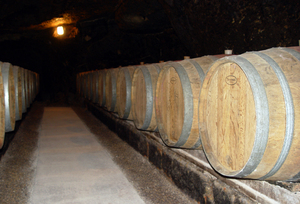Fermentation is the biological process whereby yeast converts sugar to alcohol and carbon dioxide. Fermentation is the basis for the production of nearly all consumer alcohol products, but it is possible to use fermentation at home to produce a delicious alcohol based fruit topping that can be used on ice cream or cakes. The end product is known as “fermented fruit” and is a well-known delicacy among those people who grow their own fruit.
The first step in preparing fermented fruit is to locate fresh fruit that still has the natural yeast on its skin. Yeast can be recognized as a white powdery substance covering the skin of many types of fruit. Many types of fruit, including plums, blueberries, and nectarines are all able to be found with the yeast still on. It is important to find fruit that is organically grown, since you should not rinse the fruit because doing so will also rinse off much of the yeast from the fruit.
Using organically grown fruit will minimize the possibility of contamination by harmful pesticides. If you grow your own fruit, there will almost certainly be natural yeast on the fruit when it is picked from the tree, bush, or vine. However, much of the fruit from your local farmer’s market will also still be coated in natural yeast.
Nearly any type of fruit can be used in the preparation of fermented fruit, with the exception of citrus fruit which will have a negative impact on the fermentation process. The only requirement is that a good portion of the fruit must have some good quantity of yeast still on it to start the fermentation process. I myself enjoy using plums, assorted berries (e.g. blueberries, raspberries, strawberries, blackberries, boysenberries, etc.), and orange fruits like apricots, peaches, or nectarines.
Since fermentation is a process that uses yeast to convert sugar into alcohol, with carbon dioxide as a byproduct, you will also need some sugar. Plain white sugar is just fine, although brown sugar, honey, or molasses may be used if you would like to add additional flavors to the finished fermented fruit product. I myself enjoy the natural flavors of the fresh fruits, which also contain their own natural sugars, so I usually just use plain granulated sugar when making fermented fruit. And finally you will need about a cup of warm water. The water must be warm, not hot, since hot water can actually kill the yeast that is needed for fermentation.
To make the fermented fruit is very simple. Cut up the assorted fruit into whatever size chunks you prefer, and place these fruit pieces into a medium sized bowl. Berries such as blueberries and raspberries may be kept whole. Again, it is important to leave the yeast on the fruit, so do not peel the skin off of any yeast-containing fruit. If you like, you may remove the skins from any fruit that you deem unpalatable once the fermented fruit is complete. Once the fruit is in the bowl, add the cup of sugar and the cup of warm water. A small amount of heat is needed to begin the fermentation process strongly, which the warm water provides adequately.
Once the sugar, water, and fruit have been combined, the fermentation process will begin. This is anticlimactic to watch as it is barely noticeable, except for the formation of tiny bubbles of carbon dioxide in the mixture once some time has passed. Carbon dioxide is a natural byproduct of the fermentation process, and these tiny carbon dioxide bubbles are normal when preparing fermented fruit. In fact, when the fermented fruit is complete, it will have a slightly carbonated texture and zip due to the infusion of carbon dioxide in the resulting product.
Once all the ingredients have been combined, cover the bowl loosely with a paper towel. It is important not to seal the mixture with a tight lid, or mold can result. This covered mixture must sit on the counter anywhere from two or three days to a full week to allow the sugar to ferment fully into alcohol. It is important that the fermenting mixture not be put in the refrigerator, since the low temperatures will halt the fermentation process. The yeast can survive the cold fairly well, but they will not continue fermenting the sugars until the mixture is removed from the refrigerator. This can be an effective way to store and continue a fermenting mixture mid-fermentation to be continued later.
Once several days have passed, the yeast will have converted most of the sugar to alcohol and carbon dioxide, and the fermented fruit will be ready to serve as you choose. It is important to note that the mixture will be quite high in alcohol content, which means that you should use common sense in its consumption as you would for any alcohol-based product. The final fermented fruit product will be a syrupy, sweet, alcohol-laden topping that you can use on your favorite desserts, on everything from ice cream to pastries to cakes. The mixture can also be used as a starter to make more fermented fruit, as long as the yeast are still alive and you keep adding more fruit, warm water, and sugar as necessary to begin the fermentation process again. If you have not had the joy of making your own fermented fruit, pick up some fresh fruit and let the natural yeast do its delicious magic.



